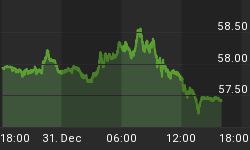U.S. stocks are outperforming and Morgan Stanley thinks the trade war has already been priced in, so it’s upgrading emerging market currencies because it sees central banks stepping up policy responses to protect economies and calm investor nerves.
Last week’s strong rally by emerging market assets also prompted Morgan Stanley’s change of heart to neutral.
“We think this remains a difficult world for EM but we’ve likely adjusted enough for now. Most investors expect trade issues to escalate and so this is priced in to an extent,” James Lord, a strategist at Morgan Stanley, said in a note, as reported by Market Watch.
Lord thinks “this marks the beginning of a period of stability and range-bound markets for EM”.
Anyone watching the Argentine peso early Monday would have thought … yes … this makes sense, but it was a fleeting thought.
Over the weekend, the peso climbed to a one-month high, gaining as much as 2.8 percent and reaching 36.16 per dollar after news that the government was in talks with the IMF for an increase in Argentina’s line of credit from $50 billion to as much as $70 billion, the Financial Times reported.
But by Monday morning, those gains were reversing because varying reports emerged spreading confusion over exactly how much the IMF would add on to the credit line. Traders seemed to solidify their skepticism when Bloomberg quoted a government official as saying the credit line increase would only be $3-$5 billion.
Emerging Markets indexes have been declining steadily due to a Chinese economic growth slowdown and trade war concerns.
And while Morgan Stanley and Goldman Sachs are becoming more optimistic, as Forbes puts it, “emerging markets may be forecasting an emerging disaster”.

The question is whether the recent rebound that’s tempting Morgan Stanley really indicates the bottom.
According to Bloomberg, it will depend on China and India—and the outlook for both isn’t great.
China’s foreign sales are challenged by the most recent intensification of the tariff battle with Washington, which as of midnight on Monday put into effect another $200 billion in tariffs on Chinese goods. And then India is watching its currency dive as oil imports become increasingly expensive.
Bloomberg also notes that China’s retail sales show “signs of softening in recent months”.

Yet, Morgan Stanley is increasing its exposure to “high-yielding” currencies, including the Argentine peso, the Indonesian rupiah and the Russian ruble.
This, at a time when the MSCI’s emerging market index is down over 9 percent this year. Related: $18.3 Billion Deal Creates Global Mining Giant
But they’re calling the bottom, with Lord saying that “after a significant sell-off, we close our bearish view on EM and shift into neutral gear … We can see the case for some temporary stability after a six-month bear market”.
Just because Morgan Stanley sees the bear hibernating now doesn’t mean the bulls are coming out, though.
“However, more material escalatory risks over the medium term mean that this issue should re-emerge as a strong headwind in time and so we do not see the case to move bullish,” Lord said.
Goldman Sachs, too, is shedding some emerging market skepticism, as “recent price action has likely helped buoy sentiment for EM assets”. Goldman analysts noted that they have detected “a marked change over the past two weeks in investors’ focus on EM – from downside risk to valuation and ‘opportunities’, Reuters reported.
Goldman describes the optimism now as “tepid”, citing Turkey’s September interest rate hike (which Erdogan pretended to disagree with), along with softer inflation numbers in the U.S.
By Michael Kern for Safehaven.com
More Top Reads From Safehaven.com:

















